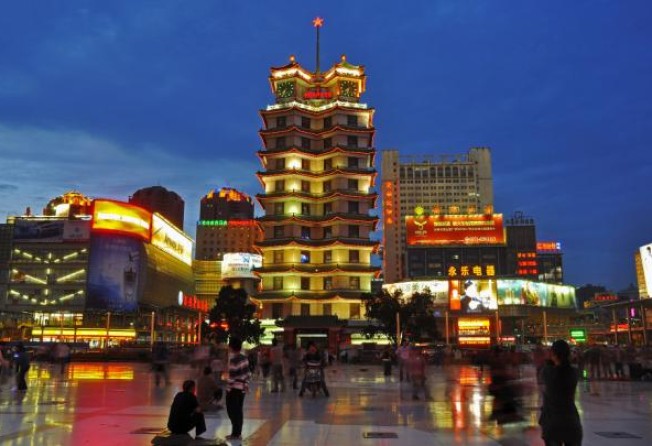Monument to struggles
Tower which dominates city centre symbolises efforts of the past and challenges still ahead.

The centre of Zhengzhou is dominated by the Erqi Memorial Pagoda, a 14-storey tower that commemorates a workers' union strike against a proposed railroad from Hankou to Beijing. The strike was led by the Communist Workers' Union and held on February 7, 1923 in Pule Park. After the communist victory in 1949, the park was turned into the Erqi Memorial Hall, which includes the pagoda and a large plaza.
Erqi Plaza today is not only a monument to workers' struggles, but also one of the city's most popular gathering points. A market pops up every night primarily selling food, but also all manner of toys, fireworks, glow-sticks, clothes, shoes and other things that come and go throughout the year. The plaza doesn't always fill up during the week but, at weekends, Erqi is abuzz with children on roller skates, babies waddling around and impromptu races between other children in toy cars.
The tower is accessible to the public. On the ground and basement floors are exhibitions of the 1923 railroad workers' strike, the causes and effects, and the ultimate results. Higher floors provide visitors with a glimpse of Zhengzhou's remarkable rise from an almost forgotten provincial backwater to a transport and industrial hub for central China.
The plaza is surrounded by massive malls and emporiums that include most domestic big names, but also international brands testifying to the development of Zhengzhou over the past decades. The city has experienced tough times in the past, as development and progress was often held hostage to individual and official gain but, with intense central scrutiny and funds, the city seems to be pulling itself out of the doldrums.
The activity in Erqi Plaza, during the daytime and at night, is a sign of that progress.
On many nights, women engage in group dances that last well into the night, and they are always surrounded by friends, families and onlookers who clap and laugh at the grace that the women display. Sometimes a singer or two will pop up.
On very special occasions, a storyteller will whip out a clapper and entertain some of the hundreds of workers and farmers that helped build the modern Zhengzhou.
They are the people who symbolise the struggles of previous workers and the continuing struggle of Zhengzhou to become a modern city.